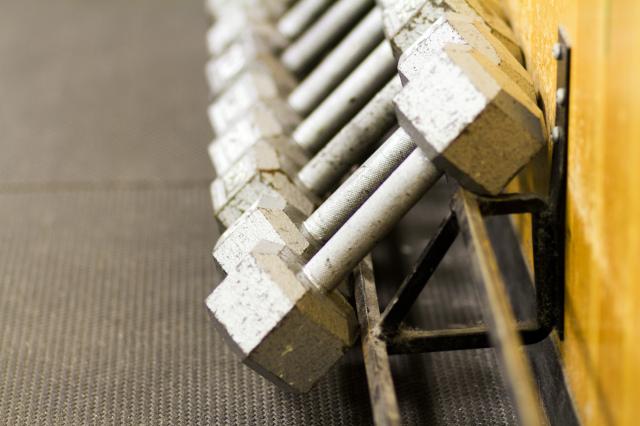
How Weight Lifting Improves Immune Health & a Guide to Getting Started
Share
We all know that exercise is good for us. There is probably not a single day that you do not see a commercial, a blog or infographic on social networking about fitness and how physical exercise is good for us. And those mostly suggest staying on the safe side of the road with moderate exercises like walking and jogging around 3 times a week, so not to overstress your body, etc. But what about weight training? How does weight lifting improve immune health?
While it is true there is no bad physical activity (within reason, of course!), and they are all beneficial in one way or another, there are some that are more beneficial than others.
An exercise that is not suggested as often is weight training. There are several reasons why it is not suggested by every other TV host on all the morning shows. One of those reasons is that you need…well, weights. Not all of us do a regular workout by moving weights around the house while cleaning and vacuuming.... because we don’t all have weights. The second reason is that people usually connect weights with body-building and/or heavy weights and injuries. But the fact is that weight training is good for our bodies. But how much weight lifting improves immune health without becoming detrimental?
Our bodies are an incredibly complex system with the incredible power of adaptation. This ability of adaptation is what saw us throughout our history and evolution of mankind. We still harness that ability in our everyday life and it is through these challenges that we grow.
The fact is, our bodies do not have to adapt to anything if we keep them in their comfort zone. We need to get them out of that zone. We need to stress them in order to provoke that reaction, adapt to a new “situation” and improve them.
The benefit of using weights is that we can choose the amount of stress. If we are just beginning to exercise because of our health, and if we are not used to exercising it may be more challenging than we would like. Our body weight may be too much for us at that moment. Should we just give up? NO! We start small. The smallest weights can be less than 10 ounces. We can and we should start small and then build our way up to more demanding weights. Right away we can see all the possibilities of how weight lifting improves immune health!
 Moderation is important because, unfortunately,even though there are numerous benefits of training, those can be achieved only through moderation. Therefore “No pain no gain” is NOT the rule that older or less active people looking to improve their health should stick to. You can find that “a moderate exercise program is more than sufficient to increase immunity to disease” like said on www.breakingmuscle.com. Unfortunately, intense and strenuous exercising especially if done often and repeatedly can have a detrimental effect on parts of the immune system, such as the number of T-cells.
Moderation is important because, unfortunately,even though there are numerous benefits of training, those can be achieved only through moderation. Therefore “No pain no gain” is NOT the rule that older or less active people looking to improve their health should stick to. You can find that “a moderate exercise program is more than sufficient to increase immunity to disease” like said on www.breakingmuscle.com. Unfortunately, intense and strenuous exercising especially if done often and repeatedly can have a detrimental effect on parts of the immune system, such as the number of T-cells.
How do our bodies work?
When we exercise we induce a small amount of stress to our muscles and cardiovascular system. That stress actually creates microscopic damage to muscles. And then the body not only repairs that damage but makes muscles a bit stronger. The body does this in order to prevent future damage, thus adapting, preparing and making us stronger. But why do we need to be stronger? Stronger and more active muscles use more energy and more calories, which is especially important for a people with a sedentary lifestyle. This will also improve long-term metabolism, which helps with losing weight. During exercise, we increase the blood flow through the muscle and this “increases the good cholesterol and lowers the bad triglycerides” says the Mayo Clinic. Weight exercise increases bone density, thus preventing osteoporosis. People who exercise regularly sleep better and have more energy. Strength training can have a detrimental effect on the immune system, because of over exhaustion, but if done properly, weight lifting improves immune health and overall health in so many ways.How to exercise
As we said earlier, there are numerous weight sizes, but... how to pick the right one? Before you pick up any weight you should know your goal and your health. Let your physician know what you are planning to do. Your doctor knows your health status and may give you some points to pay attention to. Have your doctor’s permission before starting exercising, especially if it is your first time, and/or you haven’t been exercising for some time. If you are considering joining a gym, this could be a good way to experiment with not only weights, but also elastic bands or tubes, a Pilates ball, kettlebells and other resistance training equipment. This could give you a feel for which you prefer and may want to consider investing in eventually for home use. When selecting a gym, find one that's convenient, friendly and understanding about working your way up slowly. Because many people pick the most popular club, pay the membership, do 1 or 2 or training sessions and then never go again... take the time to find the one that suits you. Ask a trainer or instructor what kind of equipment and training you can do there. Tell him what you want to achieve, and see if the gym is a good fit.The first training...
The first training… week…month…should be you getting to know your body. Getting to know how it feels, how it reacts. Many people give up because they expect too much too fast. In order to improve health, we need to work out the whole body. In the beginning, you should do the whole body during every training, but do not exhaust yourself. Start small with a 2-3 exercise per body part which are usually defined as legs, core, arms, shoulders, chest, and back. Start with weights which you can lift around 15 times in 2-3 series per exercise. But don’t continue with a weight which you can lift 40 times and only do 15. Try to pick the one that your muscle will feel after the 15 repetitions. Do not use weights when working on the core (muscles of lower back and stomach area), at least not in the beginning. Because if you become injured you'll know why it's called the core. Weight lifting improves immune health, but it will not do you any good if you get injured. When it comes to the use of machines, in the beginning, it is the best to stick to free weights. But some areas are best done with machines so if you decide try them out, stick to machines with plain movement, nothing too complicated which also goes for free weights. Do not work fast. Do not swing the weights, nor throw them. Once you feel the weight become too easy you can upgrade. This means either by increasing the weight or by increasing the number of exercises, or series. In the beginning, go with adding series, then, add more exercises, and in the end get a heavier weight.Moderation
 Moderation is important because, unfortunately,even though there are numerous benefits of training, those can be achieved only through moderation. Therefore “No pain no gain” is NOT the rule that older or less active people looking to improve their health should stick to. You can find that “a moderate exercise program is more than sufficient to increase immunity to disease” like said on www.breakingmuscle.com. Unfortunately, intense and strenuous exercising especially if done often and repeatedly can have a detrimental effect on parts of the immune system, such as the number of T-cells.
Moderation is important because, unfortunately,even though there are numerous benefits of training, those can be achieved only through moderation. Therefore “No pain no gain” is NOT the rule that older or less active people looking to improve their health should stick to. You can find that “a moderate exercise program is more than sufficient to increase immunity to disease” like said on www.breakingmuscle.com. Unfortunately, intense and strenuous exercising especially if done often and repeatedly can have a detrimental effect on parts of the immune system, such as the number of T-cells.
Moderate exercise reduces stress, thus allowing for your body to produce more white blood cells to fight off infection, according to certified fitness trainer Cindy Brotherston of Inspirations Personal Training. Livestrong.comSo, stay moderate in your new weight lifting routine and improve your health and lifestyle. But if you sometimes overestimate yourself and feel a bit under the weather, BioPro-Plus 500 will help boost your natural production of T-cells, and thus improve your immune system and help you recover from training.
